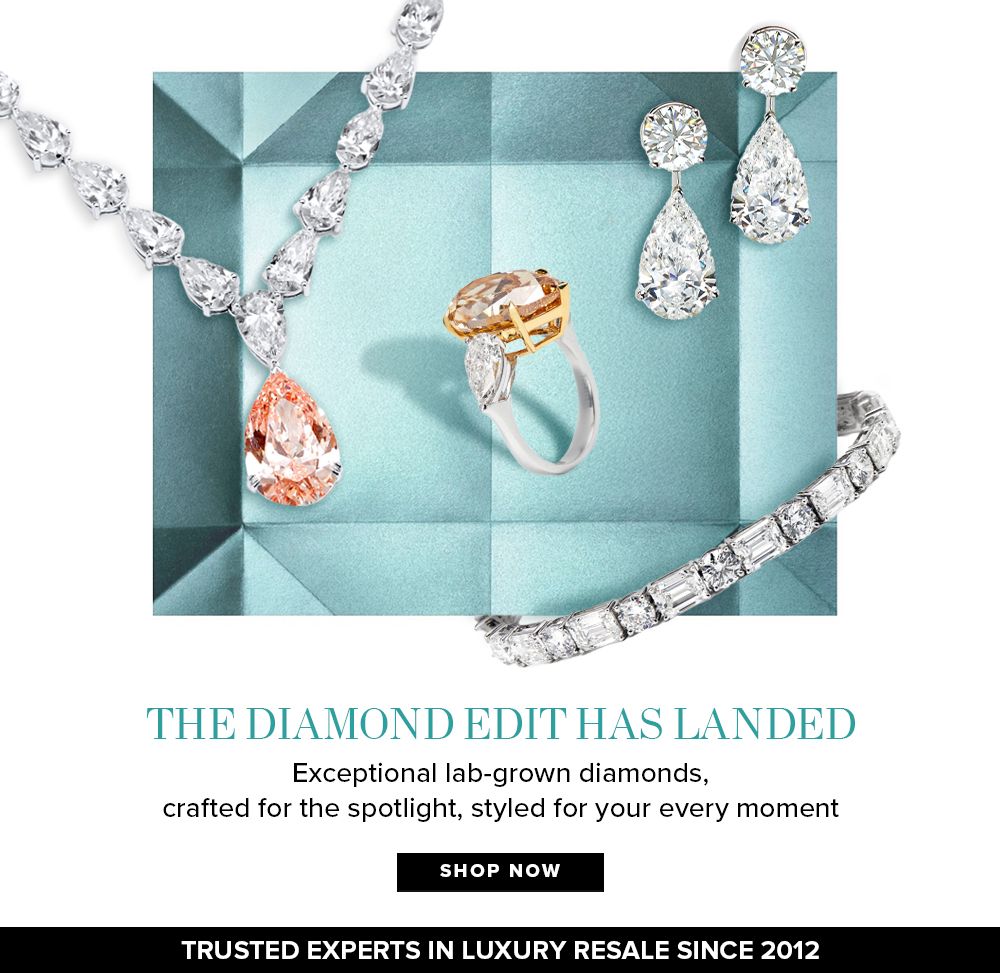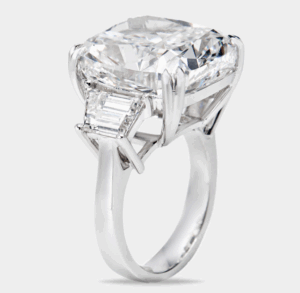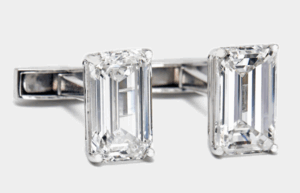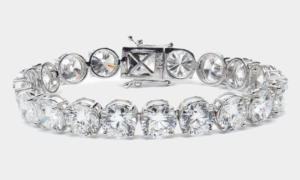Imagine a gem that glows with the same hypnotic fire as one born in the Earth’s depths over billions of years—yet crafted in just a matter of weeks with human brilliance and cutting-edge science.
Lab-grown diamonds are no longer the understudy to their mined counterparts, not an alternative—but a revolution. Human intelligence has finally blended sustainability with sophistication. As we step into 2025, more buyers are choosing them not only for their affordability and size freedom but also for their minimal environmental impact and conflict-free origins.
Time to dive deep into the latest trends, backed by fresh data and expert insights, to help you decide if lab-grown diamonds are right for you. Whether you’re shopping for an engagement ring or a statement piece, we’ll explore the facts, bust myths, and guide you on where to find the best options—especially in Dubai.
Lab-grown diamonds, also known as lab-created or synthetic diamonds, are genuine diamonds produced in controlled laboratory environments using advanced technologies like High Pressure High Temperature (HPHT) or Chemical Vapor Deposition (CVD). These methods replicate the natural formation process, resulting in stones that are chemically, physically, and optically identical to mined diamonds. Both are composed of pure carbon arranged in a crystal lattice, often achieving high purity levels such as Type IIa, which is rarer in nature but more common in labs due to precise control.
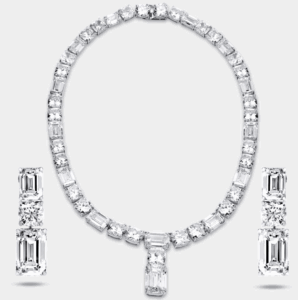
Trusted agencies like the Gemological Institute of America (GIA) confirm this equivalence, stating that lab-grown diamonds share the same properties as natural ones. Similarly, the International Gemological Institute (IGI) grades them using the identical 4Cs (cut, color, clarity, carat) framework applied to natural diamonds, ensuring authenticity and quality.
Busting Common Myths About Lab-Grown Diamonds
Despite their rising popularity, misconceptions persist. Let’s address five key myths with facts grounded in science and industry expertise:
- Myth: Lab-grown diamonds are fake or like cubic zirconia. Reality: Unlike simulants such as cubic zirconia (made of zirconium dioxide), lab-grown diamonds are 100% real diamonds with the same carbon-based composition. They score a perfect 10 on the Mohs hardness scale, just like natural diamonds. GIA emphasizes that only specialized equipment can distinguish them, as they are indistinguishable to the naked eye.
- Myth: Lab-grown diamonds lack durability or brilliance. Reality: They exhibit the same sparkle, fire, and longevity as natural diamonds. In fact, many lab-grown stones achieve higher clarity grades (e.g., VVS or flawless) because labs minimize inclusions. IGI notes that they are just as durable and will not fade or lose brilliance over time.
- Myth: Lab-grown diamonds have no value or can’t be resold. Reality: While resale values are currently lower than natural diamonds (due to abundant supply), demand is growing. Market analysts predict appreciation as adoption increases, with brands like Pandora and Tiffany & Co. normalizing them in high-end jewelry. They can be certified and insured like natural stones.
- Myth: All lab-grown diamonds are environmentally perfect. Reality: Production requires energy, but it’s significantly less impactful than mining, which disrupts ecosystems and emits high CO2. The Responsible Jewellery Council (RJC) promotes standards like the Laboratory Grown Material Standard (LGMS) to ensure sustainable practices, and some producers use renewable energy for near-zero emissions.
- Myth: Lab-grown diamonds can’t be customized or colored. Reality: Labs offer greater flexibility, producing rare colors like orange, pink or blue without treatments. This customizability is a key advantage, as noted by industry experts.
The Booming Market: Latest Figures for 2025
The lab-grown diamond market is exploding, driven by consumer demand for ethical and affordable luxury. In 2025, the global market size is estimated at around USD 29.73 billion, up from USD 27.24 billion in 2024, with projections to reach USD 97.85 billion by 2034 at a compound annual growth rate (CAGR) of about 11.77%. This growth outpaces natural diamonds, fueled by technological advancements and shifting preferences among millennials and Gen Z.
For context, the overall diamond jewelry market is valued at USD 356.04 billion in 2024 and expected to hit USD 478.81 billion by 2030. Lab-grown diamonds now capture about 20% of the market, a figure expected to rise as production scales. Bain & Company reports highlight this shift, noting increased adoption in fine jewelry.
With growing awareness around climate impact, lab-grown diamonds are winning favor among conscious buyers as the smarter option, cutting carbon emissions by 50–90% while keeping the sparkle intact.
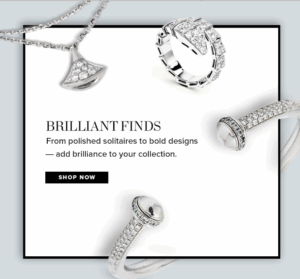
Expert Endorsements: Trusted Voices Vouching for Lab-Grown
Leading gemologists and agencies are championing lab-grown diamonds for their quality and ethics. Tom Moses, GIA’s executive vice president and chief laboratory and research officer, states: “Similar to other man-made gem materials, we anticipate the continued acceptance and popularity of laboratory-grown diamonds.” He adds that over 95% of lab-grown diamonds fall into a narrow high-quality range for color and clarity, making them consistently superior in some aspects.
IGI, the world’s first institute to grade lab-grown diamonds, endorses them as real diamonds with identical properties, recommending certification for authenticity.
The RJC supports their sustainability through dedicated standards. At the same time, the Kimberley Process has improved natural diamond ethics by certifying 99.8% of global trade as conflict-free—yet lab-grown options eliminate any risk entirely.
Price Comparison: Lab-Grown vs. Natural Diamonds
Affordability remains a major draw. Natural diamonds may appreciate over time due to scarcity, but lab-grown diamonds are gaining resale traction as markets mature.
| Diamond Type | Carat Size | Average Price (USD, 2025) | Average Price (AED, 2025) | Notes on Pricing and Value |
| Natural Diamond | 1 Carat | $4,000 – $9,000 | AED 14,700 – AED 33,000 | Higher cost due to mining and scarcity. May appreciate over time. |
| Lab-Grown Diamond | 1 Carat | $845 – $3,000 | AED 3,100 – AED 11,000 | 70-90% cheaper than natural due to efficient production. Prices vary by quality (cut, color, clarity). |
| Natural Diamond | 1.5-2 Carat | $8,000 – $18,000* | AED 25,000+ | Premium pricing reflects rarity; higher potential for long-term value retention. |
| Lab-Grown Diamond | 1.5-2 Carat | $2,725 – $8,160* | AED 10,000 – AED 15,000 | Larger stones show wider price gap, offering affordability for bigger sizes. Gaining resale traction. |
Note: USD prices for 1.5-2 carat range are estimated based on scaling 1-carat prices and market trends, as exact figures may vary by retailer and quality.
Brands Embracing Lab-Grown Diamonds
Major players are integrating lab-grown into their lines:
- Pandora: Offers affordable lab-grown collections, emphasizing design and sustainability.
- Tiffany & Co.: Features lab-grown in select pieces, blending luxury with ethics.
- De Beers (Lightbox): A dedicated lab-grown brand from the natural diamond giant.
- The Luxury Closet: Authentic pre-owned platform offering a new line of GIA-certified lab-grown diamonds, The Diamond Edit.
- Others include Zales and emerging labels like Chrome Hearts.
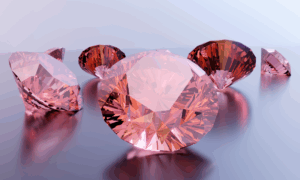
FAQs
- Are lab-grown diamonds real diamonds? Yes, they are 100% real with identical properties to mined diamonds.
- Do lab-grown diamonds last forever? Absolutely—they’re just as durable and maintain brilliance over time.
- What’s the price difference between lab-grown and natural diamonds? Lab-grown are typically 70-90% less expensive, allowing for larger or higher-quality stones.
- Can you resell lab-grown diamonds? Yes, though values are lower, demand is increasing with brand adoption.
- How do I distinguish between lab-grown and natural diamonds? Specialized equipment, such as that used by labs like GIA or IGI, is required; jewelers utilize testers for identification purposes.
- Are lab-grown diamonds sustainable? Generally, yes, with lower CO2 emissions, mainly from renewable-energy producers certified by RJC.
- What certificates should I look for? GIA or IGI reports ensure authenticity and detail the 4Cs.
Shine Bright with Confidence: Discover the Best Lab-Grown Diamonds in Dubai @ The Luxury Closet
In 2025, lab-grown diamonds redefine luxury—uniting innovation, sustainability, and timeless beauty. If you value ethics, affordability, and endless design possibilities, they’re the clear choice. Natural diamonds may hold the weight of tradition, but the future of fine jewelry sparkles with lab-created brilliance.
At The Luxury Closet, explore The Diamond Edit—a curated collection of GIA-certified lab-grown diamonds that radiate authenticity and elegance. Whether it’s an engagement ring, a statement necklace, or sparkling earrings, your perfect stone awaits—crafted with emotion, certified for value, and destined to be treasured forever. Shop now!
Sources:
precedenceresearch[dot]com/lab-grown-diamonds-market
vantagemarketresearch[dot]com/industry-report/lab-grown-diamonds-market-2458
nextmsc[dot]com/report/lab-grown-diamonds-market
statista[dot]com/topics/8602/lab-grown-diamond-industry/
gia[dot]edu/gems-gemology/summer-2024-laboratory-grown-diamond-trends
igi.org/lab-grown-diamonds/
responsiblejewellery[dot]com/standards/laboratory-grown-material-standard/
kimberleyprocess[dot]com/en/about
forbes[dot]com/sites/timtreadgold/2024/09/23/diamond-mining-losing-its-sparkle-as-lab-grown-market-share-rises/
paulzimnisky[dot]com/lab-grown-diamond-jewelry-market-forecast-to-almost-double-in-size-by-2025
growndiamondcorp[dot]com/blog/lab-grown-diamond-jewelry-market-forecast-size-to-double-by-2025/
bain[dot]com/insights/global-diamond-industry-report-2019/


